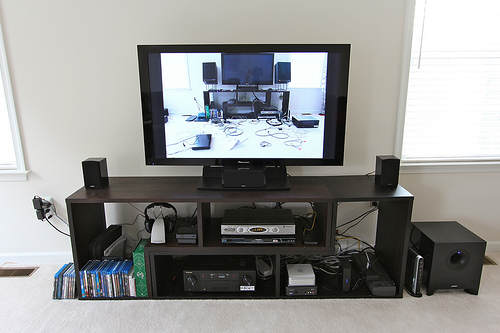
Home theater systems come in all shapes, styles and prices. No matter how expensive your system is, it’s no use if you don’t know how to set it up and use properly.
Sadly, it’s common among people to splurge too much on a home theater only to find out it’s not what they wanted — or they couldn’t make it work properly. This is where knowledge comes in; this is where knowledge can turn your buy into a worthy investment.
You don’t have to a pro to know how to buy, set up and use a home theater system. All you have to do is be in the know. Here are rookie home theater mistakes you need to avoid like the plague.
- Failure to read manuals
We’re in an age where we’ve become a lot more impatient. Since information can be delivered fast nowadays, we like for things to move quicker. However, it’s not always the case. There are times when we have to pace ourselves and not forget the most important things, no matter how simple it sounds.
So don’t neglect the manual. Read it from page to page no matter how easy the setup may seem. You’d be surprised how much you can learn from it. Plus, it may just save you tons of time by preventing you from committing mistakes.
- Going for the least expensive gear
Don’t get us wrong. We’re not asking you to buy the most expensive one either. The most common mistake when buying a home theater system is that people go for the least expensive gear.
Most of the time, the cheapest of the cheap doesn’t have enough input and output options, are easily prone to wear and tear and have insufficient features to put a smile on your face. So it’s best to wait it out if you can’t afford one that’s going to be worth your money. It’s going to be far more expensive to constantly have something repaired.
- Buying the wrong size of television
Most of us have this belief, “the bigger, the better”. However, it’s not always the case especially when you’re working with a home theater system. A rookie mistake is buying the wrong television size to pair with your system. If you buy something too large, then you might end up seeing the line or pixel structure of the image. The result? We think we bought a poor TV.
A good rule of thumb is the TV screen should be about 2 times the width of the TV screen, and for an HDTV (720p/1080p) the optimum viewing distance is about 1-1/2 times the width of the television screen. This means if you have a 50-inch screen, you need to be seated 5-6 inches away from it.
- Skimping on power protection
We like to spend a lot on other things that aren’t always necessary. By the time we actually need something to heighten our safety, we tend to skimp on it. The same goes with your audio/video gear. Plugging it without protection can cause serious problems.
Just as you are willing to invest on luxurious home theaters, be prepared to invest on quality power strips, surge protectors and the like. Otherwise, shortage and fire can occur — and we can all agree that’s not something we want to have.
- Lack of ventilation
Like computer monitors and CPU’s, your home theater systems need proper ventilation. It needs enough room to breathe. Otherwise, it’s going to burn out easily and you’ll waste your energy on complaints of “faulty gear” when in fact, it’s your responsibility to produce sufficient ventilation.
Before fixing or mounting everything, double check first. See if you can have someone over who can tell you if that’s enough ventilation you’re giving to your gear.
- Skipping calibration
Your home theater system is only as good as how you set it up. Sure, the default or automatic settings fair well and could be enough. However, you’re not maximizing the benefits of this investment if you don’t even calibrate your system.
Go for auto-calibration. If you can take it up a notch, develop the sound and image further by tweaking the other features. You’d be happy you did it.
- Using substandard cables
Just like skimping on power protection, a lot of us are guilty of using substandard cables, connectors and adapters. The fact is what you use matters. However way you hook up your system, it’s going to affect its overall performance.
So be sure to invest on something of quality and those that can last for a very long time. You wouldn’t want to keep on buying cables every month just because the audio/video keeps getting fuzzy, right?
